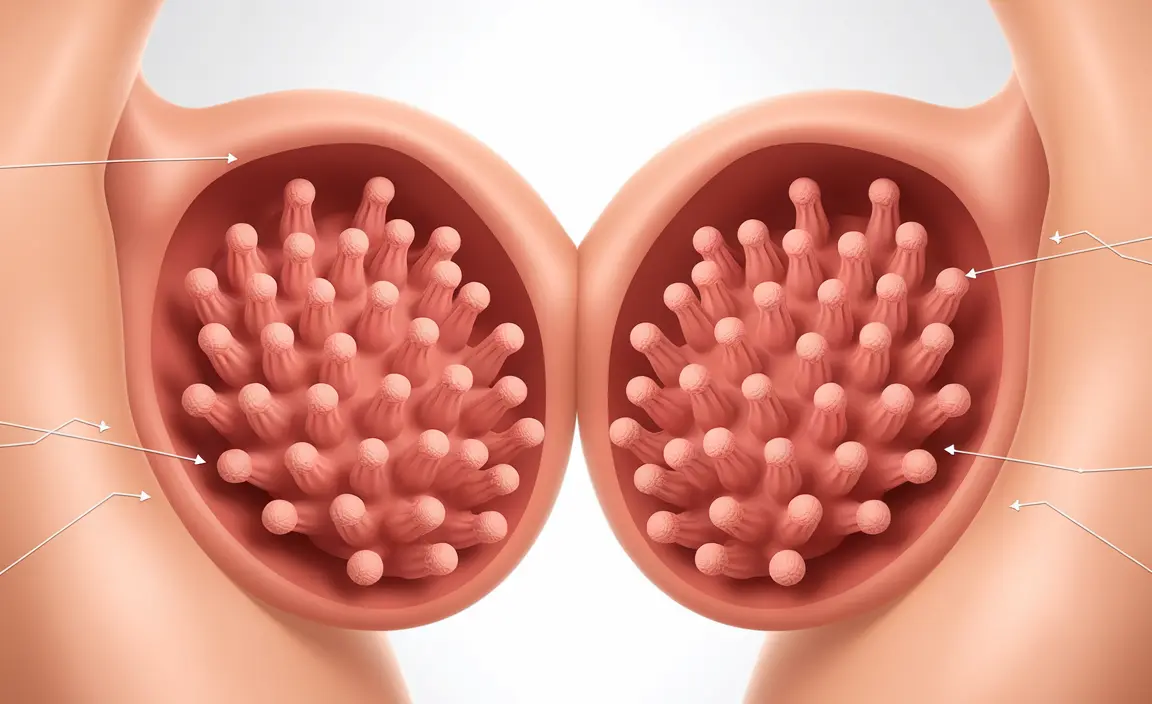Vestibular papillomatosis is a normal anatomical variation that occurs in the female genital area, specifically affecting the vestibular region. While this condition can sometimes cause concern due to its appearance, it's important to understand that it's a completely natural occurrence that affects many women. This comprehensive guide will help you understand what vestibular papillomatosis is, its characteristics, and how to distinguish it from other conditions.
What Is Vestibular Papillomatosis?
Vestibular papillomatosis consists of small, pink, finger-like projections that appear symmetrically along the inner labia minora and vestibule of the vulva. These projections are actually normal tissue formations and are considered a feminine anatomical variant, similar to how some people naturally have freckles or skin tags.
Distinguishing Features and Appearance
The characteristics of vestibular papillomatosis are quite specific and can help differentiate it from other conditions:
- Symmetrical appearance on both sides
- Soft, pink or flesh-colored projections
- Uniform size and shape
- Regular spacing between projections
- Projections that do not merge or cluster together
- Smooth surface texture
Natural Occurrence vs. Medical Condition
It's crucial to understand that vestibular papillomatosis is not a disease or infection. This natural variation occurs in approximately 1 in 4 women and doesn't require medical intervention. The presence of these papillae is completely normal and does not indicate any underlying health issues.
Physical Characteristics and Symptoms
Most women with vestibular papillomatosis experience no symptoms at all. However, some may notice:
- Slight sensitivity during intimate contact
- Occasional mild discomfort
- Increased awareness during personal hygiene
- No pain or itching under normal circumstances
When to Seek Medical Advice
While vestibular papillomatosis itself doesn't require treatment, you should consult a healthcare provider if you experience:
- Sudden changes in appearance
- Unusual discomfort or pain
- Itching or burning sensations
- Concern about distinguishing between this condition and other genital conditions
Impact on Women's Health
Understanding vestibular papillomatosis's role in women's health is important. This condition:
- Does not affect fertility
- Has no impact on sexual health
- Doesn't interfere with pregnancy or childbirth
- Requires no medical intervention
- Is not contagious or transmissible
Frequently Asked Questions
What does vestibular papillomatosis look like and how can I tell it apart from genital warts?
Vestibular papillomatosis appears as symmetrical, flesh-colored or pink projections that are uniform in size and regularly spaced. Unlike genital warts, these projections don't cluster together and maintain a consistent pattern on both sides of the vulvar area.
What causes vestibular papillomatosis and is it contagious or related to HPV?
Vestibular papillomatosis is a natural anatomical variation and is not caused by any virus or infection, including HPV. It is not contagious and cannot be transmitted between partners.
Does vestibular papillomatosis require treatment and how is it managed if symptoms appear?
No treatment is necessary for vestibular papillomatosis as it's a normal variation. If discomfort occurs, gentle hygiene practices and wearing breathable cotton underwear can help manage any sensitivity.
Can vestibular papillomatosis cause itching, pain, or other symptoms and when should I see a doctor?
Generally, vestibular papillomatosis doesn't cause symptoms. However, if you experience itching, pain, or unusual changes, consult a healthcare provider to rule out other conditions.
Is vestibular papillomatosis hereditary or does it affect sexual health, pregnancy, or fertility?
While the genetic components aren't fully understood, vestibular papillomatosis has no impact on sexual health, pregnancy, or fertility. It's simply a natural variation in female anatomy.




